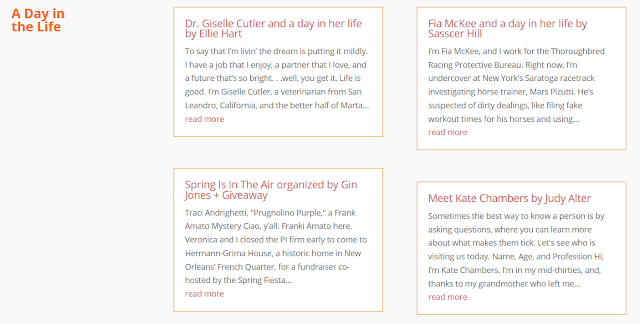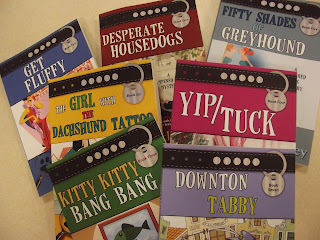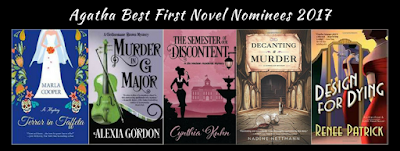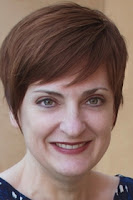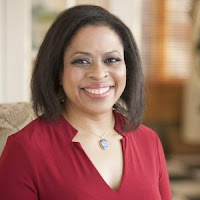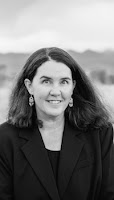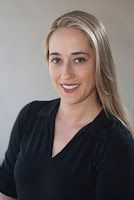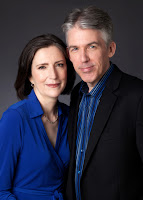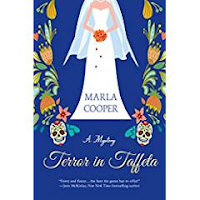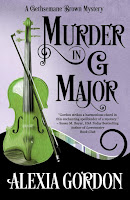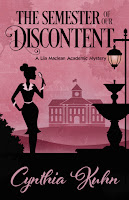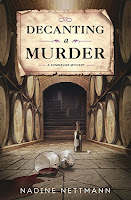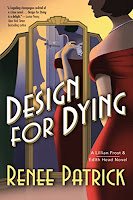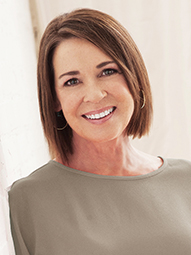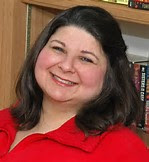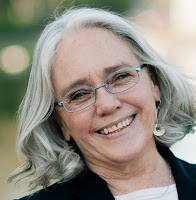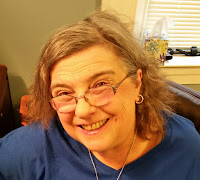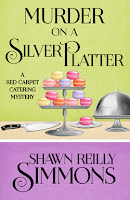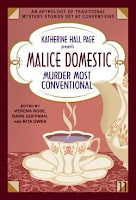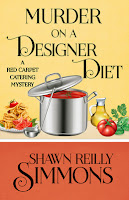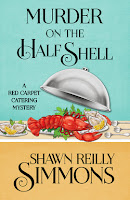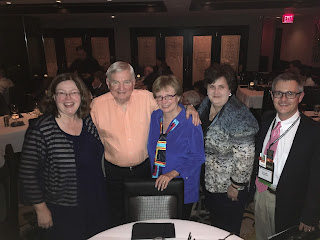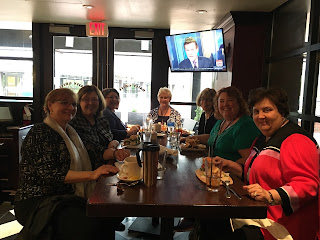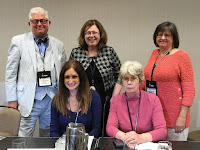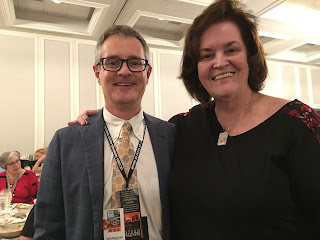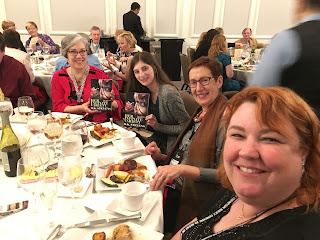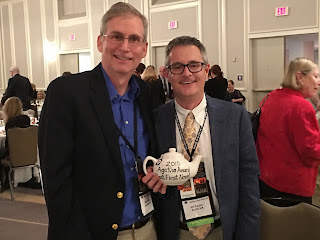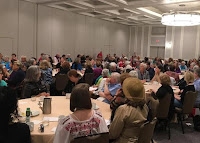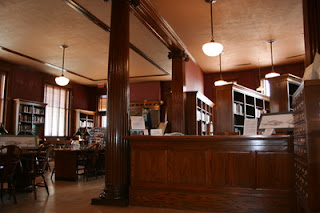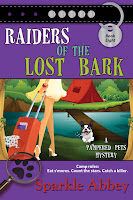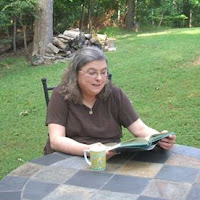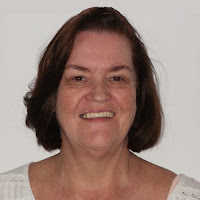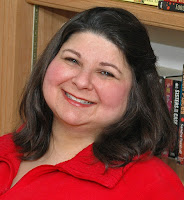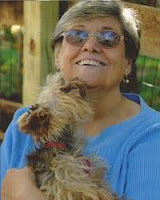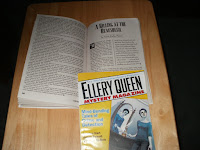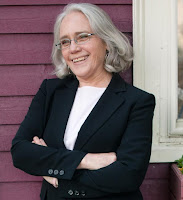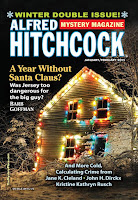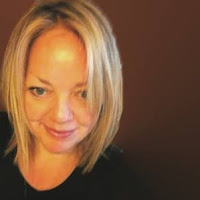 Shawn Reilly Simmons has an impressive resume. Born in Indiana, she grew up in Florida and graduated from the University of Maryland with a BA in English. She’s worked as a sales executive, bookstore manager, fiction editor, convention organizer, wine consultant, and caterer. Since 2003, she’s served on the Malice Domestic Board of Directors. Those who have attended the annual meeting near Washington, DC, have seen Shawn calmly overseeing the registration desk or confidently moderating terrific panels. In addition, she’s a founding member of the Dames of Detection and an editor at Level Best Books, which publishes the Best New England Crime Stories Anthologies.
Shawn Reilly Simmons has an impressive resume. Born in Indiana, she grew up in Florida and graduated from the University of Maryland with a BA in English. She’s worked as a sales executive, bookstore manager, fiction editor, convention organizer, wine consultant, and caterer. Since 2003, she’s served on the Malice Domestic Board of Directors. Those who have attended the annual meeting near Washington, DC, have seen Shawn calmly overseeing the registration desk or confidently moderating terrific panels. In addition, she’s a founding member of the Dames of Detection and an editor at Level Best Books, which publishes the Best New England Crime Stories Anthologies.
Oh, and did I forget to say that she’s the author of the Red Carpet Catering Mysteries (published by Henery Press) that features Penelope Sutherland, a movie set caterer, and has contributed the short story “A Gathering of Great Detectives” to the Malice Domestic 11: Murder Most Conventional Anthology? Not to mention that she’s Mom to an adorable fellow named Russell.
Obviously, Shawn knows how to prioritize so she gets lots of things done and done well. Many thanks to her for taking time to visit with us and tell us how she manages everything so beautifully.
Have you always loved writing?
Yes! I’ve wanted to be a writer, in some capacity, since I was in
elementary school. I won Best Creative Writer when I graduated from high
school, and I was encouraged by my professors in college to pursue writing as a
career, so it was always an aspiration of mine. The trick was making that
aspiration a reality.
Many of us know you as one of the smiling faces of the Malice Domestic convention.
How did you become involved with Malice?
I got involved with Malice when I met Anne Murphy, our Volunteer Chair,
at a panel during Malice 14. She was a Reilly before she was a Murphy, and she
was curious if we were somehow related. Next thing I knew, I was invited to
meet with the Board, and I accepted the vacant PR Chair position the following
year. Fifteen years later, I’m still there, which is crazy–not that I’m still
there, but that so much time has passed. It feels like yesterday!
How has Malice influenced your writing?
I got involved with Malice because traditional mysteries are my favorite
stories to read, and to write, it turns out. I’ve learned more than I can begin
to say from the authors I’ve met, the friendships I’ve made, and the advice
I’ve been given by so many writers and fans I admire. I think I would still be
writing stories if it weren’t for Malice, but I’d probably be flailing around
trying to find my way.
You’ve had many diverse work experiences. How did you start catering for
filmmakers?
My sister is a chef, and started cooking on movie sets right after
graduating from culinary school. Over the years, I would go and help her in the
kitchen when she needed an extra set of hands. She had transitioned into being
a personal chef and was in between clients when the on-set catering company
she’d previously worked for began filming a movie in the DC area. I was
freelance editing at the time, so we were both available, and were hired to be
part of the crew. Like so many things for me, it was a matter of luck and being
available when different opportunities presented themselves.
Tell us about your protagonist, Penelope. How much of you is in her
character?
Penelope Sutherland is chef-owner of Red Carpet Catering, an on-set
movie catering business. She shares a house with her best friend, up-and-coming
actress Arlena Madison, who is one of the many children of acting icon Randall
Madison. Penelope is like me in some ways: she’s loyal, hardworking, and loves
to cook. She’s younger than me, and has a bit more confidence than I did at her
age, which is working out for her so far.
What do you plan for Penelope’s future?
Penelope is building up her catering business, and she’s going to get
bigger and better opportunities based on her skill and business sense, not just
because she’s along for the ride with the Madison family. She’s going to have
some setbacks too, both personally and professionally, like we all do. Penelope
is also embarking on a romantic relationship with her friend from grade school,
Joseph Baglioni, who also happens to be a Homicide Detective for New Jersey PD.
They both work crazy hours–Penelope is on set sixteen hours a day sometimes,
and is often away on location for months at a time. Penelope and Joey have to
make the time they do have together special, which doesn’t always work out
perfectly, but they’re sticking with it.
Your novels have been published by two sources. Tell us about your
publication journey.
I
wrote my first book after I had my son and decided to stay home with him. I
wasn’t sure if I could even write a mystery, or if it would be any good, but I
had my characters set in my mind, and I had never read anything about on-set
catering before, so I felt I had a fresh take on the movie industry. What I
didn’t have was an idea about how to proceed to publication when my manuscript
was finished. I decided to publish through an offshoot of my mother’s
publishing company, mostly for friends and family, and didn’t do much else with
the book after that. To my surprise, people (other than my family) read it and
liked it, and I was approached by an agent (at Malice, of course). She said she
could definitely sell my book to one of the big five publishers, but I had to
write the second one quickly, so they could see I could carry a series. I did
what she asked, and then heard back from the agent that the publisher loved the
idea of working with me, and that I was a strong writer, but that books about
movies hadn’t worked well for them in the past. They wanted me to think of
another series idea and get writing it quickly.
I had just finished my
second book, and was on the fence about what to do. I went the same route as
the first one with it, and began toying with the idea of conceiving a new
series. I basically had to decide whether to abandon Penelope and the gang, who
I had grown to love, or move on to something the editors at the large
publishing house considered more marketable. A few weeks later, I approached
Henery Press (at Malice, of course), and was thrilled that they were interested
in the Red Carpet Catering books. They signed me and I re-wrote the first two
books under the guidance of my editorial team, and wrote the third book (from
scratch). That book is Murder on a Designer Diet, which was just released on
June 7th. I’m so glad I was able to find a welcoming home for Penelope &
Company.
In addition to your delightful series, your short story appears on the
recent Malice anthology. How is writing a short story different from writing a
novel?
You know, I hadn’t written a short story since college, and hadn’t
thought about writing them seriously. A year or so ago some local friends
hosted a short story pot luck dinner where everyone brought a dish and read an
original story they’d written. I had so much fun coming up with something for
my friends, it got the juices flowing again, and I decided to give the blind submission
for the Malice anthology a try. I was happily surprised that my story was
selected, to say the least. Now I’m working on a few different short stories,
for different projects.
Also, you have a new venture with the Dames of Detection and Level Best
Books. Tell us about this experience, particularly what it’s like to be an
editor.
Yes! We’re very excited to be the new editors of Level Best Books, which
publishes the annual Best New England Crime Stories anthology. I’d seen a note
on Facebook that the previous editors were planning to release their final
anthology, and that they weren’t continuing the series. The Dames felt the
anthologies are such a great tradition, and so many authors have gotten their
start there, that we decided to approach the previous editors about keeping
them going. Luckily all eight of us agreed to everything, so we transitioned
over this year. Our first anthology, Windward, received 225 submissions, and
we’re just about through our blind evaluation process. We’ll have our final
decisions made by mid-July. Being an editor is very fun, while also a lot of
work. We plan to do at least two anthologies next year, and are all in
agreement to do even more going forward.
How do you balance your many responsibilities and still find time for
writing?
Some
days are more successful than others! But I do tend to be a scheduler and a
list maker. I work hard to keep everything organized and on track. I get up
early to write, usually at 5. I’m most productive and creative during that
quiet time. Later in the day I’m either working on Malice, editing for the
anthologies I’m involved with, or performing other tasks related to the books.
Then there’s the regular life stuff: being a good wife & mom, managing the
household, getting dinner on the table. And I always make time for myself: I
read every day and get in a workout of some kind. It’s safe to say I’m never
bored!
Does Russell enjoy having a writer for a Mom?
He
does! He says every morning: “Daddy went to work, I’m going to school, and
Mommy works on the computer.” He’s actually started writing stories of his
own–one of his teachers has really been encouraging him at school. We started
reading together every night when he was six weeks old, and by the time he was
3 1/2 he had learned to read, which was so exciting. We still read every
night–it’s such an ingrained habit now, the main part of our bedtime ritual.
We’ve been sick, we’ve gone to bed really late, but no matter what, we always
end the day with a book.
Shawn, thank you for taking the time to be with us. Check out Shawn’s website at:
http://www.shawnreillysimmons.com/books.html

